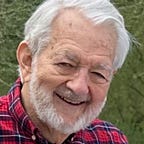Of Winter Dreams and Second Acts
This is the University Club on Summit Avenue in St Paul, Minn. F. Scott Fitzgerald lived nearby and was a regular there before and after his sudden acclaaim in the early 1920s.
(I grew up a mile away, 30 years later. But his legend still hung in the air when I was growing up.)
Among the legends is that he carved initials in the bar here, expressing his love for Zelda Sayre, a rich girl from Mobile, Alabama who, against tradition, married a poor boy. But only after the poor boy got rich and famous at age 22.
The picture brings back the title of one of his short stories, Winter Dreams, that appeared in a collection, All the Sad Young Men (1922).
In a few hours all the Deliriously Wealthy Jazz Age kids in St Paul, beneficiaries of the incredible wealth in grain, livestock and lumber that passed through the city on its way East, would gather for the New Years Dance of 1920.
These were the dancing daughters of mothers whose long skirted ways had been set before the trauma of the Great War and Spanish Pandemic.
There’d be plenty of hooch in hip flasks; the Charleston played over and over; necking and petting for the Catholic girls and boys. One girl even got pregnant, but she was Lutheran.
Some hearts would break for a lifetime; some would twine for a lifetime. And one’s heart would stop the day Jimmy Carter was elected president, a half-century later.
Scott learned that afternoon that winter dreams are as evanescent as summer dew. And he could no more capture and hold that pregnant winter sky than Jay Gatsby, three years later, could possess the green light at the end of the dock.
‘There are no second acts in American lives.’
© 2023, Thomas Mahon
